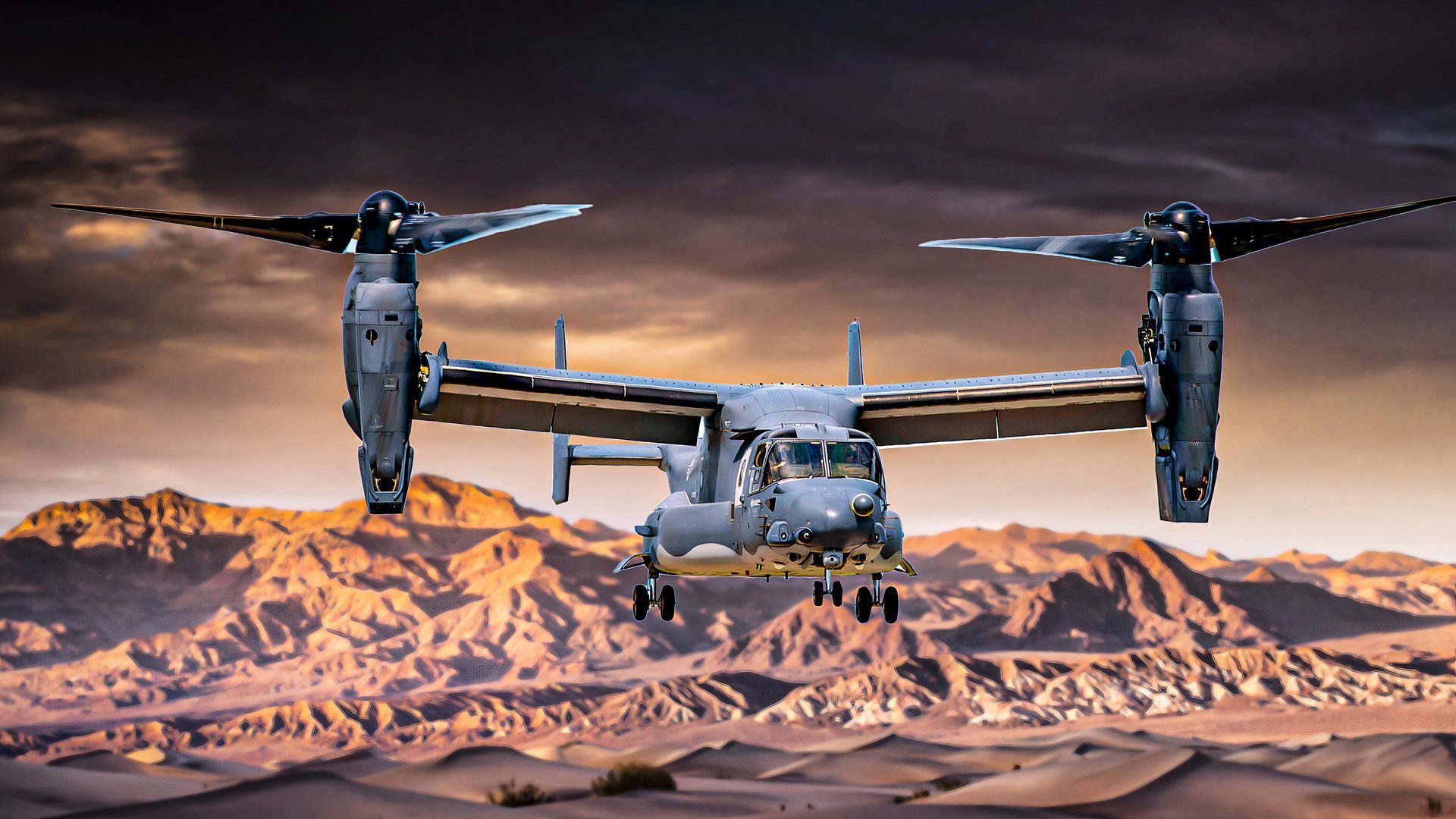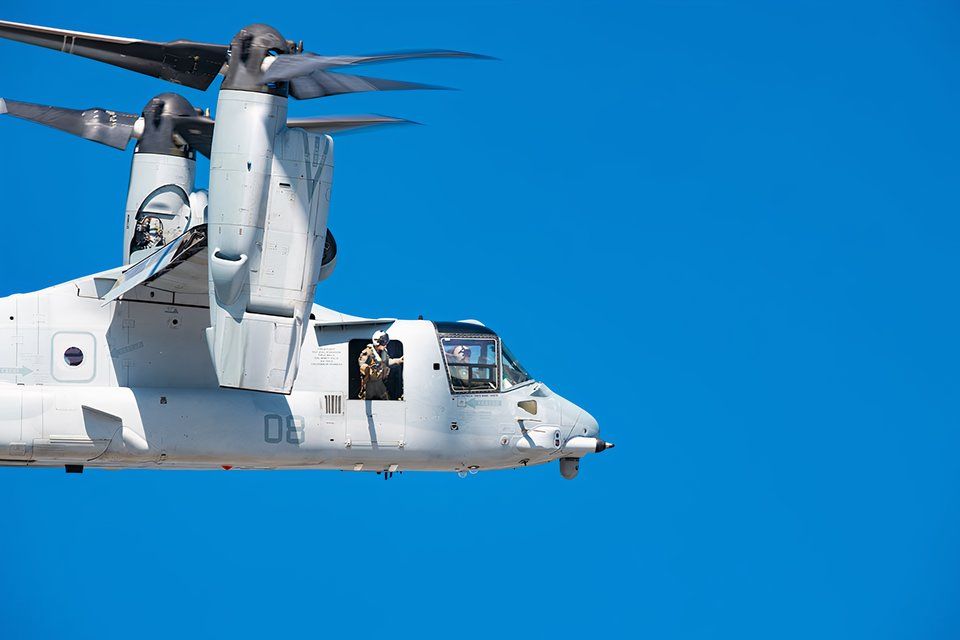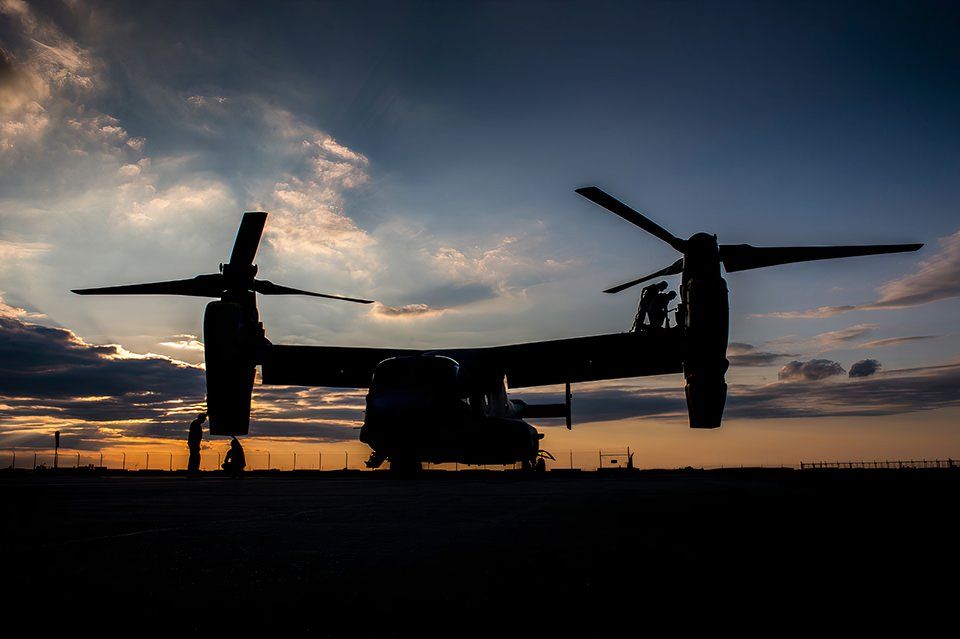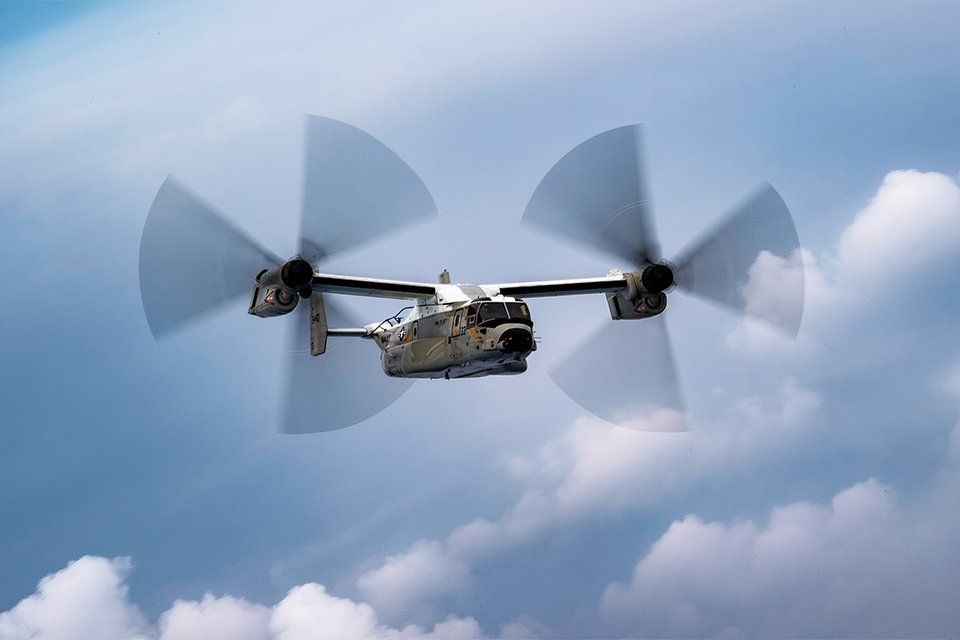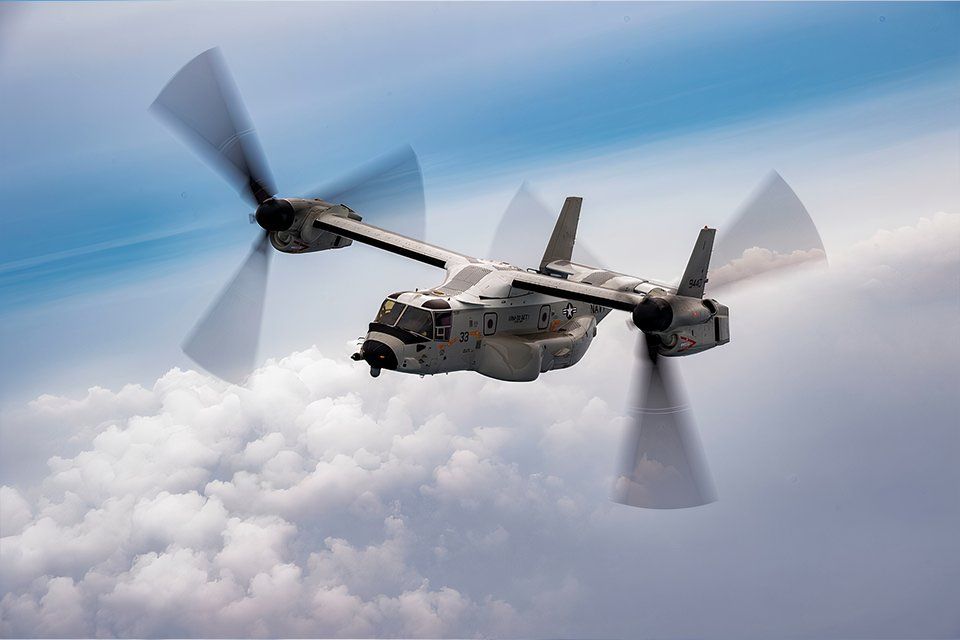Summary
- The V-22 Osprey is a tilt-rotor aircraft optimized for special operations missions.
- The Osprey transitions from a helicopter to an airplane when engines rotate for forward thrust.
- The Osprey can reach speeds exceeding 300 MPH, faster than traditional military helicopters.
The Boeing V-22 Osprey is unlike any other aircraft ever made. It is a versatile platform that combines a fixed-wing aircraft’s operational capabilities with a military-grade helicopter’s versatility. Now adopted by three major branches of the United States Armed Forces, the Osprey has become a symbol of the impressive capabilities that can be attributed to American military engineers.
The aircraft entered service with the United States Marine Corps in 2007 after receiving its first aircraft in 2000 and performing years of operational training. Since then, the Osprey has been fielded by the United States Air Force, which first deployed its tiltrotor aircraft in 2009.
Photo: Boeing Defense
By 2021, the Osprey had proven itself to be a capable platform for all sorts of missions, which led the United States Navy to adopt the aircraft for carrier onboard delivery services. However, despite its years of success, one rather complicated question remains: is the V-22 Osprey a plane or a helicopter?
What does the Air Force have to say?
As the predominant authority when it comes to military aviation and one of the world’s largest operators of the Osprey, it is important to look at what the United States Air Force has to say on this matter. According to the organization, the V-22 Osprey is described as a tilt-rotor aircraft, one that is optimized for long-range infiltration, exfiltration and resupply missions primarily for special operations forces.

Related
At Least 1 Dead After US Military Aircraft Crashes Near Japan
A V-22 Osprey crash in Japan has resulted in at least one fatality.
The organization claims that the Osprey combines the characteristics of a turboprop aircraft with those of a military-grade transport helicopter. The plane increase speed and range in comparison to most standard helicopters, but offers the versatility of a large helicopter.
Photo: Boeing Defense
The Air Force goes on to note that, like both military helicopters and fixed-wing aircraft, the aircraft has integrated threat countermeasures, a terrain-following radar and forward-facing infrared sensors, allowing it to operate in various austere conditions. But despite extensive descriptions of its capabilities, the organization hesitates to indicate specifically whether the aircraft is a helicopter or airplane.
As the organization defines a helicopter as an aircraft which generates upward lift from horizontally rotating propellers, the Osprey certainly does fit this definition while taking off. Furthermore, the aircraft also has fixed wings and generates forward-moving lift, which would also classify it as an airplane. While the Air Force does not specifically define the Osprey into one of these two categories, a broad analysis of the organization’s documents would yield one of the following three conclusions:
- The V-22 Osprey is both an airplane and a helicopter
- The V-22 Osprey is neither an airplane nor a helicopter
- The V-22 Osprey is a helicopter when generating upward thrust and an airplane when generating forward thrust
The third of these explanations is likely the most plausible. As a result, one can conclude that the Osprey transitions from a helicopter to an airplane once its engines rotate to less than 45 degrees above the vertical, and begin to primarily generate forward thrust.
Can the V-22 Osprey take off like an airplane?
If the V-22 Osprey were capable of taking off fully horizontally like a conventional aircraft, it would be fair to classify it as an airplane, granted one with the additional capability to take off vertically. However, the V-22 Osprey is incapable of taking off vertically for a reason that the following image will likely make very clear.
Photo: Boeing Defense
The V-22 Osprey’s massive rotors, which are required for getting the heavy aircraft into the air, are far too large to allow for conventional takeoff. In the event that an Osprey were to attempt a horizontal takeoff, its rotors would contact the ground, requiring the plane to take off either vertically or with the rotors at a slight forward tilt.
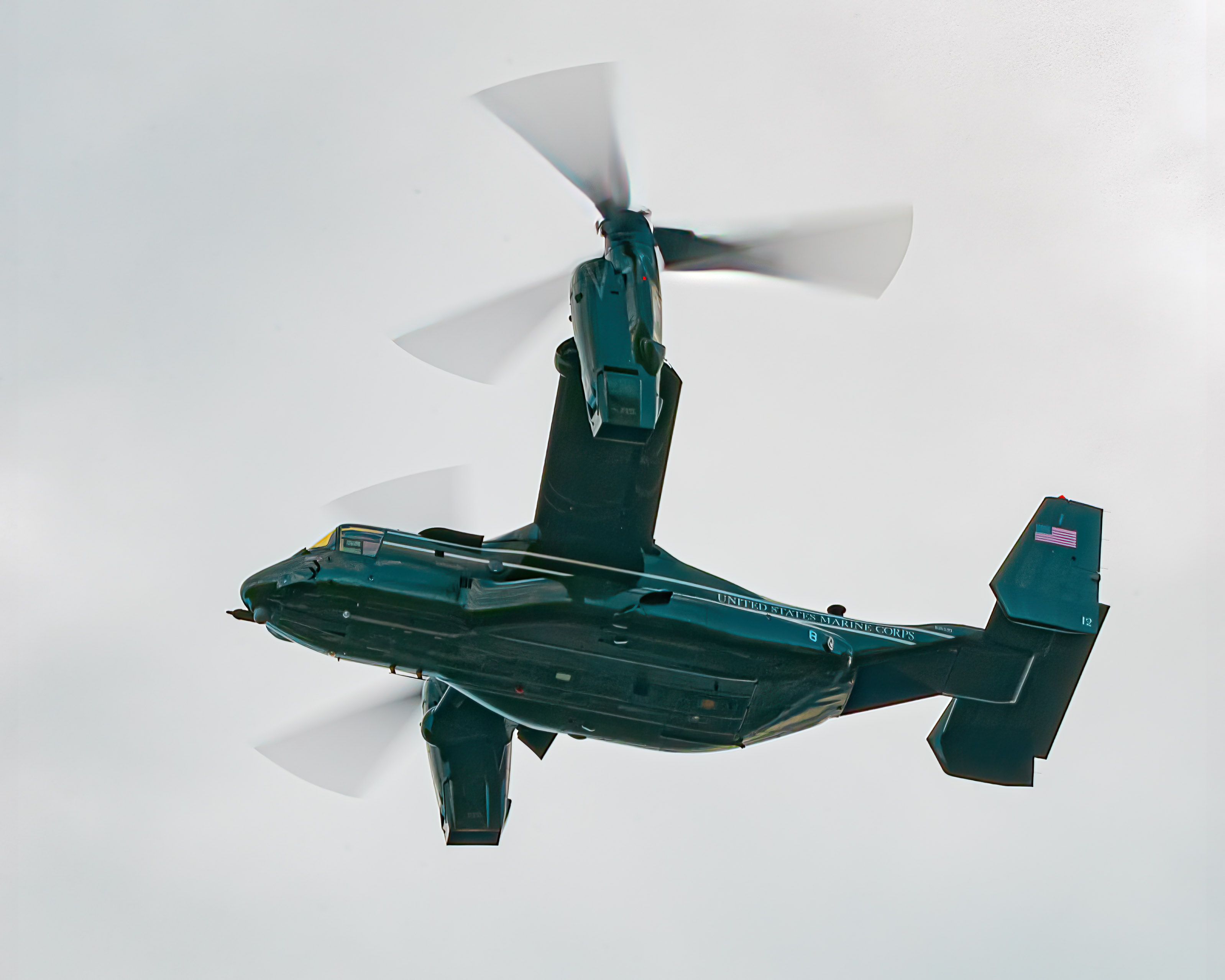
Related
The Bell Boeing V-22 Osprey: Everything You Need To Know
The V-22 Osprey looks and performs like no other aircraft. Let’s take a look at what makes this tiltrotor so unique.
With an inability to takeoff conventionally, a V-22 cannot perform a complete flight acting entirely as a turboprop powered aircraft. As a result, Boeing classifies the V-22 as a “a joint service multirole combat aircraft utilizing tiltrotor technology,” according to information on its website. The aircraft offers the following specifications:
|
Category: |
V-22 Osprey Specification: |
|---|---|
|
Capacity |
Up to 32 troops or a combination of cargo or light attack vehicles |
|
Range |
879 nautical miles |
|
Service ceiling |
25,000 feet |
|
Maximum vertical takeoff weight |
47,500 pounds |
Is the V-22 Osprey faster than a helicopter?
The V-22 Osprey offers a number of key operational advantages over the traditional military helicopter that is often used for short-range troop transportation and special operations. One of the most important factors of the aircraft’s design was its ability to fly at faster speeds than traditional helicopters.
Photo: Boeing Defense
Once in horizontal flight, the Osprey can move with the efficiency of most turboprop aircraft its size. The aircraft, when operating with its rotors in the horizontal position, is able to achieve operational speeds that exceed 300 miles per hour, even pushing past 350 miles per hour at some altitudes. While these numbers are far lower than what any jet-powered transport aircraft can bring to the table, it does offer an improvement over most military-grade helicopters, one reason the United States Marine Corps was so excited to invest in the Osprey’s development.
In order to understand just how drastic the Osprey’s increase in operational speed is, it is important to take a deeper look at some of the military helicopters it replaced. The V-22 primarily replaced the Boeing Vertol CH-46 Sea Knight, a tandem rotor helicopter that offered impressive payload capabilities. Despite all its advancements, the Sea Knight was only capable of operational speeds of around 165 miles per hour.

